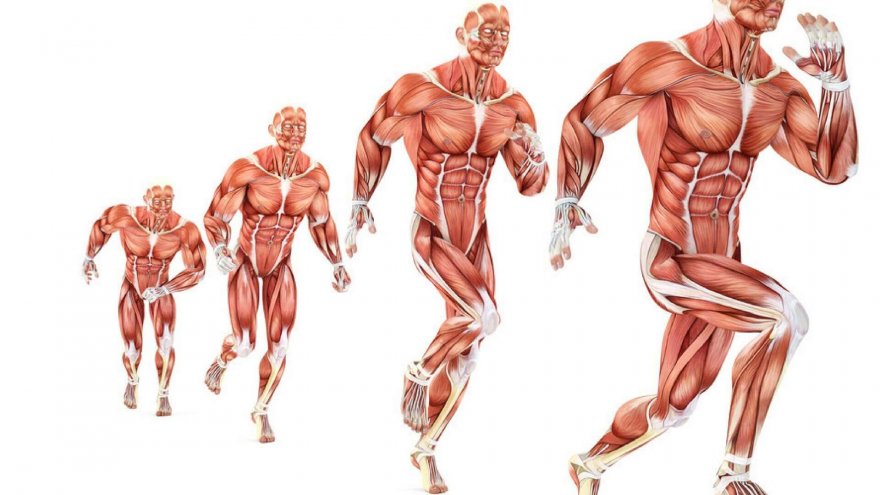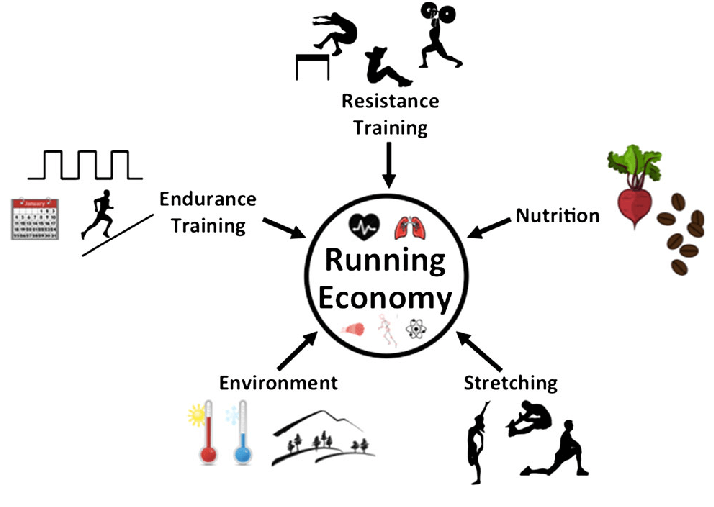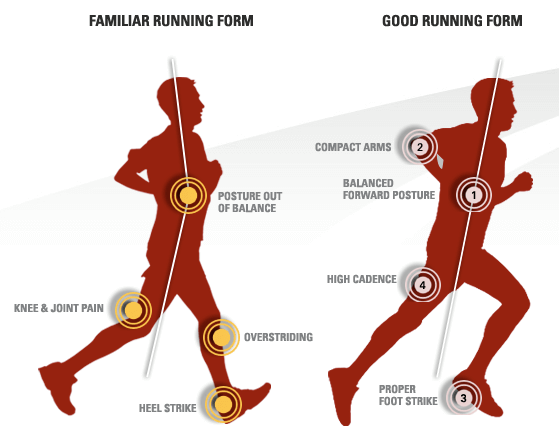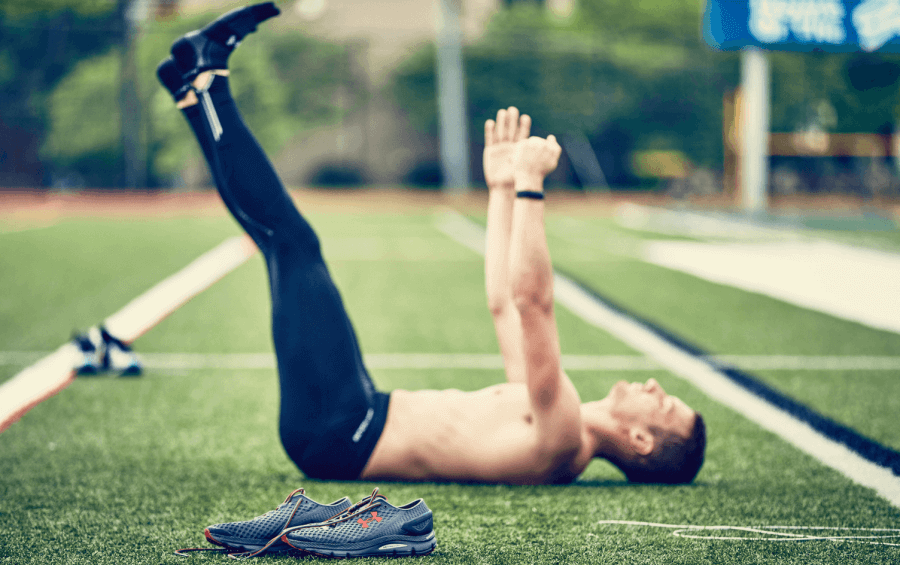Running Economy VS Running Efficiency

If you are putting in the work as a runner, it is likely that you want to make the most of your effort. What I mean by that is that you want to put yourself in the best possible position to be making gains for your effort.
It makes sense, doesn’t it? Why do the work without reaping the benefits? Many runners are used to looking at time as an indicator of growth as a runner. Did you know that there are other measures that you might want to be taking into consideration?
Bringing a group of athletes into the same room may bring a conversation about running economy versus running efficiency. How are they different? Are they similar? Does your average runner need to be concerned about efficiency and/or economy?
Excellent questions! Let’s start with some basic definitions and information to build our knowledge base on the topic.
What Is Running Economy?
Putting it into the most simple of terms, your running economy is a measure of how much oxygen your body needs in order to hold an effort running at a specific pace. Carbohydrates and fats are the two primary things used by runners in order to fuel these workout efforts. In order to break down those fuel sources, the body requires oxygen (O2).
Here is where things get complicated. In order to calculate this, you need to measure the energy used to travel (run) at a given pace. The volume of energy you use to travel this distance (V) corresponds directly to the amount of oxygen your body uses (O2). This is what people are referring to when they say they are measuring their VO2 Max.

VO2 max is often measured using a treadmill test. Specialists can put a special mask onto the person while they exercise to measure the aspired and expired. These measurements help them to determine your V02 Max. You exercise at an ever-increasing intensity until you finally reach the point of exhaustion. This testing process typically gives people an excellent idea of where their fitness level should lie.
What Is Running Efficiency?
When you do something efficiently, you are completing the task in the least amount of steps so as not to waste time or effort. In order to run (or bike or swim or perform whatever exercise task you are trying to achieve), efficiently, you are doing so without wasted mechanics.
From a technical perspective, efficiency is the ratio between the energy you produce when you exercise and what energy you use to do the exercise. On the one hand, when you compare economy and efficiency, they sound different. However, when you research deeper, you find that exercise physiologists use the terms interchangeably.
Improving Running Efficiency Or Running Economy
Plyometrics is one excellent way to improve your running economy. Plyometrics are exercise movements that use speed and power to build your endurance and strength. The use of plyometrics on a regular basis can help the athlete to run faster than they ever could. In addition, you may find yourself able to jump higher and quickly change your direction on the fly.
Excellent examples of plyometrics are power skips, where you skip as high as you can into the air. Squat jumps are another plyometric exercise.
Another way to improve your economy is to work on your stride rate. This is the same as your cadence. To measure your cadence, count the number of times your right foot hits the ground when you run for one minute. Then, you multiple that number by two. That is your cadence. Your goal is to increase your stride rate or cadence in order to improve your running economy.
Runners should shoot for hitting a cadence of 180-190 if they are trying to run at the most efficient stride rate possible. You can try to increase it a bit at a time. One method to achieve this is looking for (and running to) music that has a high beat per minute. This may help you to achieve a faster cadence.

Working on your running form is another way to improve efficiency. There are drills that can help you perfect form. If you are struggling with form, you could consider a short-term running coach to give you tips on your running technique. Some simple tips on form include:
✓ Head position: Oftentimes runners tend to look down once they get fatigued. You should look straight ahead, and keep your jaw and neck muscles relaxed.
✓ Arms: A crucial component to propelling you forward, keep your arms at your sides and use them for a full arm swing. Think about your thumb reaching near your chin, and also grazing your back pocket on the backswing. Do not cross your arms in front of you.
✓ Body: Focus on not leaning forward or back when you run. Proper body alignment helps you to run more efficiently.
Strengthening the core is another exceptional way to improve your running economy. A stronger core means greater stability in your midsection. This results in improvements in your form. In addition, runners who change nothing else and add a steady dose of the core into their exercise regiment often see an increase in speed, resulting in better race times!

While we are talking about strength, let’s discuss strength training as a means of improving efficiency. Strengthening your body will help build the stronger runner in you.
Many people will tell you that increasing mileage is another way to improve your running economy. This is because aerobic development will result in an improvement in economy. Increasing mileage often results in improved aerobic capacity. Studies show that higher mileage often shows neuromuscular changes that lead to running efficiency.
Putting It All Together
If you are trying to create a better runner in yourself, you could sign yourself up for fancy testing at an exercise research facility. You could jump on a treadmill to test your V02 max. You might even use your Apple Watch to check your max. Did you even know that your Apple Watch is capable of performing this task?
If you are not interested in geeking out on the science and numbers but you just want to feel like you are running a bit more easily, even when doing intense efforts, think about the small things you can do to make improvements when it comes to your running economy.
Sources
- , What Is Running Economy?, News Platform
Latest Articles
 Is Running on a Treadmill Easier Than Running Outside?Runners have their own preferences, whether it is treadmill running, running outside on the road, or exploring trails. So...
Is Running on a Treadmill Easier Than Running Outside?Runners have their own preferences, whether it is treadmill running, running outside on the road, or exploring trails. So... Is It OK to Use Trail Running Shoes on the Road?While trail running shoes can be used on roads, especially in situations where a runner encounters mixed terrains or pref...
Is It OK to Use Trail Running Shoes on the Road?While trail running shoes can be used on roads, especially in situations where a runner encounters mixed terrains or pref... How to Fix Sore Quads After Running?Rest, ice, gentle stretching, and over-the-counter pain relievers can help soothe sore quads after running. Also, ensure ...
How to Fix Sore Quads After Running?Rest, ice, gentle stretching, and over-the-counter pain relievers can help soothe sore quads after running. Also, ensure ... 10 Fruits With The Most Electrolytes to Replace Sports DrinksThese fruits are high in electrolytes such as potassium, magnesium, and calcium, essential for hydration, muscle function...
10 Fruits With The Most Electrolytes to Replace Sports DrinksThese fruits are high in electrolytes such as potassium, magnesium, and calcium, essential for hydration, muscle function...

